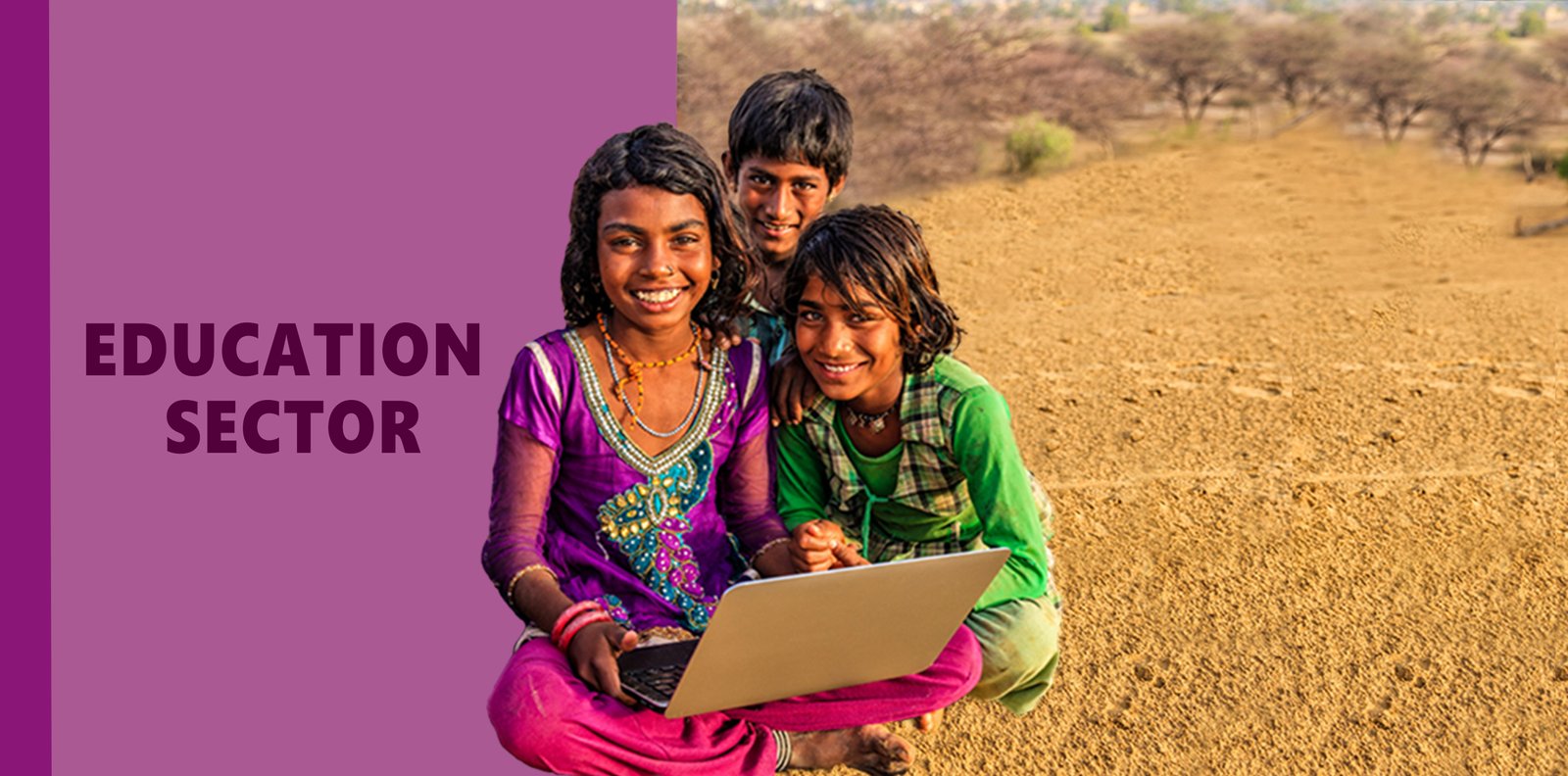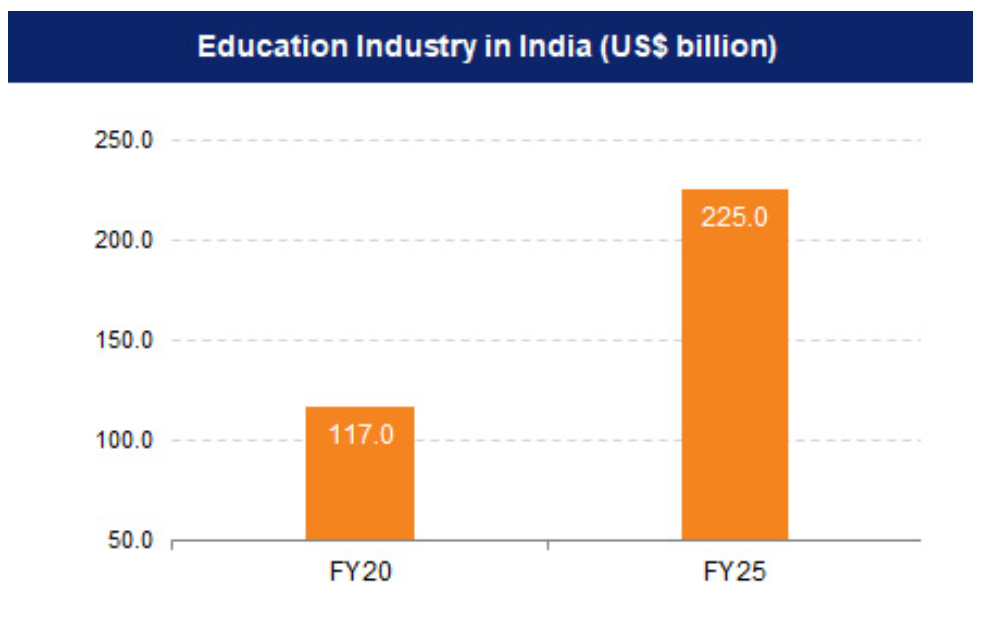

With about 15,00,000 schools, 97,00,000 teachers, and about 260 million students, the Indian educational system is one of the largest in the world.
The Australian Government has four vital roles to play in expanding the Indian student base, deepening the research and innovation relationship, positioning Australia as the foreign provider of choice for India’s TVET (Technical and vocational education and training system), and creating platforms for collaboration on online education delivery in India.
Increasing our educational ties with India is also a hedge against over-reliance on the Chinese market, which accounts for roughly 30% of our education exports.
SOLID DEMAND:
- India has the largest population in the world, with an age bracket of 5-24 years and 580 million people, which presents a humungous opportunity in the education sector of the nation.
- The nation has over 250 million school-going students, more than any other country.
- Applications for the 'Study In India' programme increased by 146% in 2021.
DRIVING ADVANTAGE:
- The delivery of educational products becomes flawless with one of the Largest English-speaking populations. The nation was ranked 52nd out of 111 countries in the English Proficiency Index 2022.
- The Indian Institute of Science (IISc) in Bengaluru and eight other Indian Institutes of Technology (IITs) - were among the top 500 universities in the QS World University Rankings 2023.
GOVERNMENT POLICIES:
- The Government of India has taken many initiatives, including National Accreditation Regulatory Authority Bill for Higher Educational and the Foreign Educational Institutions Bill.
- The National Education Policy 2020, introduced by the government, is also expected to drive growth in the sector by increasing access to quality education for all students.
- Foreign direct investment(FDI) is allowed by 100% in the educational sector.
RISE IN INVESTMENTS:
- The Indian education market is expected to rise to 225 billion US$ by FY25.
- The FDI equity inflows stood at US$ 7.92 billion from April 2000-June to 2022.
- Online education and e-learning platforms are expected to play an increasingly important role in the Indian education sector in the coming years.
- The country's ed-tech startups have received a total investment of US$ 3.94 billion across 155 deals in FY22.
- An ed-tech platform like PhysicsWallah became the nation's 101st unicorn by raising US$ 100 million in a Series-A funding round from WestBridge Capital and GSV Ventures, valuing the company at US$ 1.1 billion in June 2022.
INTRODUCTION
India is the largest population in the world in the age bracket of 5-24 years, with 580 million people, which presents a great opportunity in the education sector. The nation holds a key place in the global education industry, having one of the largest networks of higher education institutions. However, there is still a lot of potential for further progress and improvement in the education system.
With growing cognisance, independent Indian players are collaborating with international brands to provide an international standard of education. Privatised investments in the country’s education sector have increased substantially over the past two decades. The demand for Vocational degrees is also rising, with more and more students opting for specific industry-focused qualifications. The Nations Higher education institutes are focusing on creating online programmes due to the rising demand from consumers after COVID-19.
Shortly, the education sector will redefine itself with cutting-edge technologies such as Artificial Intelligence (AI), Machine Learning(ML), the Internet of Things(IoT) and blockchain. Adopting the Education 4.0 revolution promotes inclusive learning and increased employability. The Indian government has implemented policies like the NEP, which will be fully implemented over this decade starting from 2021-22 and will have a strong focus on high-quality vocational education.
MARKET DIMENSIONS
India’s education sector was estimated to be worth US$ 117 billion in FY20 and is envisioned to reach US$ 225 billion by FY25.
India has over 250 million school-going students, more than any other country. According to the AISHE(All India Survey on Higher Education), the nation had 42 million students enrolled in higher education in 2020-21, with 22 million male and 20 million female students.
As stated by the ‘State of the Education Report for India 2021’ of UNESCO, the Pupil Teacher Ratio (PTR) at senior secondary schools was 47:1, as against 26:1 in the overall school system.

The number of colleges in India reached 42,343 in FY20. The number of universities in India stood at 1,072 as of November 25, 2022. There are 8,902 total AICTE-approved institutes in the country in 2022-23. Out of these, there are 3,577 undergraduates, 4,786 postgraduates and 3,957 diploma institutes.
The ed-tech market size of the country is about to reach US$ 30 billion by 2031, from US$ 700-800 million in 2021. According to KPMG, India has also become the second largest market for E-learning after the US.
During 2021-2025, at a CAGR of almost 20%, the online education system of the nation is expected to grow by US$ 2.28 billion. The market grew by 19.02% in India in 2021.
INVESTMENTS AND GROWTH
According to the data released by the Department for Promotion of Industry and Internal Trade (DPIIT), from April 2000-June to 2022, Foreign Direct Investment (FDI) equity inflows stood at US$ 7.92 billion. The education and training sector in India has witnessed some crucial investments and developments in the recent times. In addition, the COVID-19 pandemic has accelerated the adoption of digital technologies in the education sector, creating new opportunities for growth and development. Online education and e-learning platforms are expected to play an increasingly important role in the Indian education sector in the coming years. Some of the major investments are:
The Indian Institute of Science (IISc) in Bengaluru and eight Indian Institutes of Technology (IITs) – These nine institutes were among the top 500 universities in the QS World University Rankings 2023. Also, India is home to 41 out of almost 1,500 top global institutions, with the Indian Institute of Science in Bengaluru being the highest-ranked institution in the country at rank 155.
In June 2022, ed-tech platform PhysicsWallah became the 101st unicorn by raising US$ 100 million in a Series-A funding round from WestBridge Capital and GSV Ventures, valuing the company at US$ 1.1 billion.
India has 89 universities in Times Higher Education Emerging Economies University Rankings 2022, behind Russia with 100 and China with 97.
About 100 Indian institutions have qualified for the Times Higher Education World University Rankings 2023, up from 63 in 2020.
In November 2022, the Indira Gandhi National Open University (IGNOU) launched an online MA programme in Sustainability Science.
Byju’s raised US$ 250 million from its existing investors, including Qatar Investment Authority (QIA), in October 2022. Also, it has raised Rs. 2,200 crores (US$ 300 million) to increase the company’s valuation from US$ 16.4 billion in 2020 to US$ 18 billion in 2021.
After a US$ 78 million funding round, Teachmint was at US$ 500 million in October 2021.
Bharti AXA Life announced an association with Great Learning, a leading global ed-tech company, to curate and develop a Post Graduate Program in life insurance sales in August 2022.
Ed-tech unicorn UpGrad raised US$ 225 million in a funding round that included Lupa Systems LLC and US testing and assessment provider Educational Testing Service, valuing the company at US$ 2.25 billion in June 2022.
• Indian ed-tech startups have received a total investment of US$ 3.94 billion across 155 deals in FY22.
GOVERNMENT POLICIES
The Government of India has taken many initiatives, few of them are:
Prime Minister Mr Narendra Modi inaugurated a three-day Akhil Bharatiya Shiksha Samagam at Varanasi to discuss how the implementation of the National Education Policy 2020 can be taken further across the country with various stakeholders in July of 2022.
100% FDI under automatic route is allowed in the Indian education sector.
In order to broaden the sector, the Government has taken initiatives such as the National Accreditation Regulatory Authority Bill for Higher Educational and the Foreign Educational Institutions Bill.
The Department of School Education and the Ministry of Education were acknowledged by UNESCO for their use of information and communication technology (ICT) during the COVID-19 pandemic as part of an inclusive initiative known as PMevidya.
As per the Union Budget 2022-23, allocation towards the Samagra Shiksha Scheme has increased by around 20.3%, from Rs. 31,050.16 crores (US$ 4.16 billion) in FY22 to Rs. 37,383.36 crores (US$ 5.01 billion) in FY23.
In October 2021, the NSDC launched the largest ‘Impact Bond’ in India with a US$ 14.4 million fund, to help 50,000 youngsters in the country acquire skills necessary for employment.
In February 2022, the “New India Literacy Programme” was sanctioned by the Central Government for the period FY22-27 to cover all the aspects of adult education to align with the National Education Policy 2020 and Budget Announcements for 2022-23.
The Ministry of Education approved the scheme of Rashtriya Uchchatar Shiksha Abhiyan (RUSA) in February 2022 to continue till 2026.
THE FUTURE AHEAD
Australia is in a healthy position to collaborate with India on on-shore and offshore education and paths for Indian employees to accept abroad placements. They should also strengthen their research ties and become partners in online education. In a secure, bilingual, multicultural community with a moderate climate, Australia offers students a top-notch educational experience.
With in 2030 the Higher Education in India is estimated to have:
• An augmented Gross Enrolment Ratio (GER) of 50%. Also, reduce state-wise, the gender- based and social disparity in GER to 5%.
• Combine training methods that include online learning and games, and it is expected to grow by 38% in the next 2-4 years.
• Be among the top five countries in the world in terms of research output with an annual R&D spend of US$ 140 billion.
• Have more than 20 universities among the global top 200 universities.
Various government initiatives are being adopted to boost the growth of the distance education market, besides focusing on new education techniques such as E-learning and M-learning.
The Government has also taken several steps including the opening of IITs and IIMs in new locations and allocating educational grants for research scholars in most government institutions.
